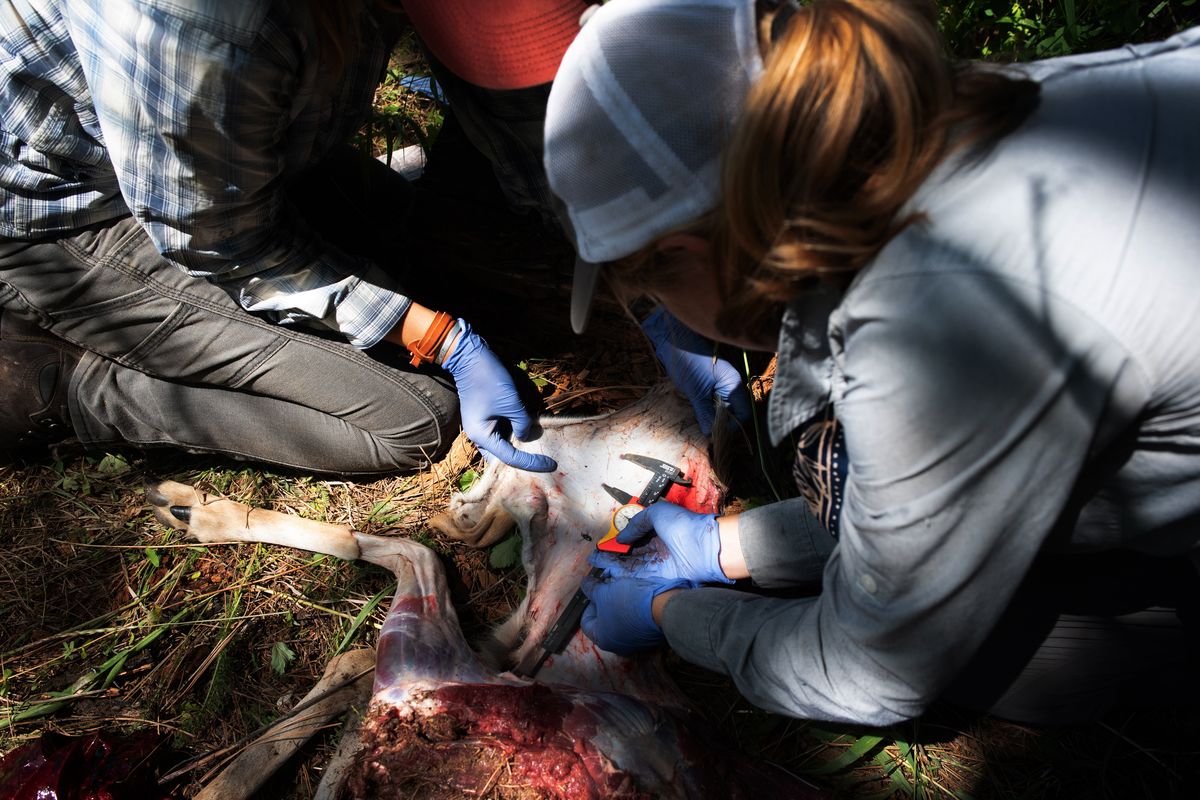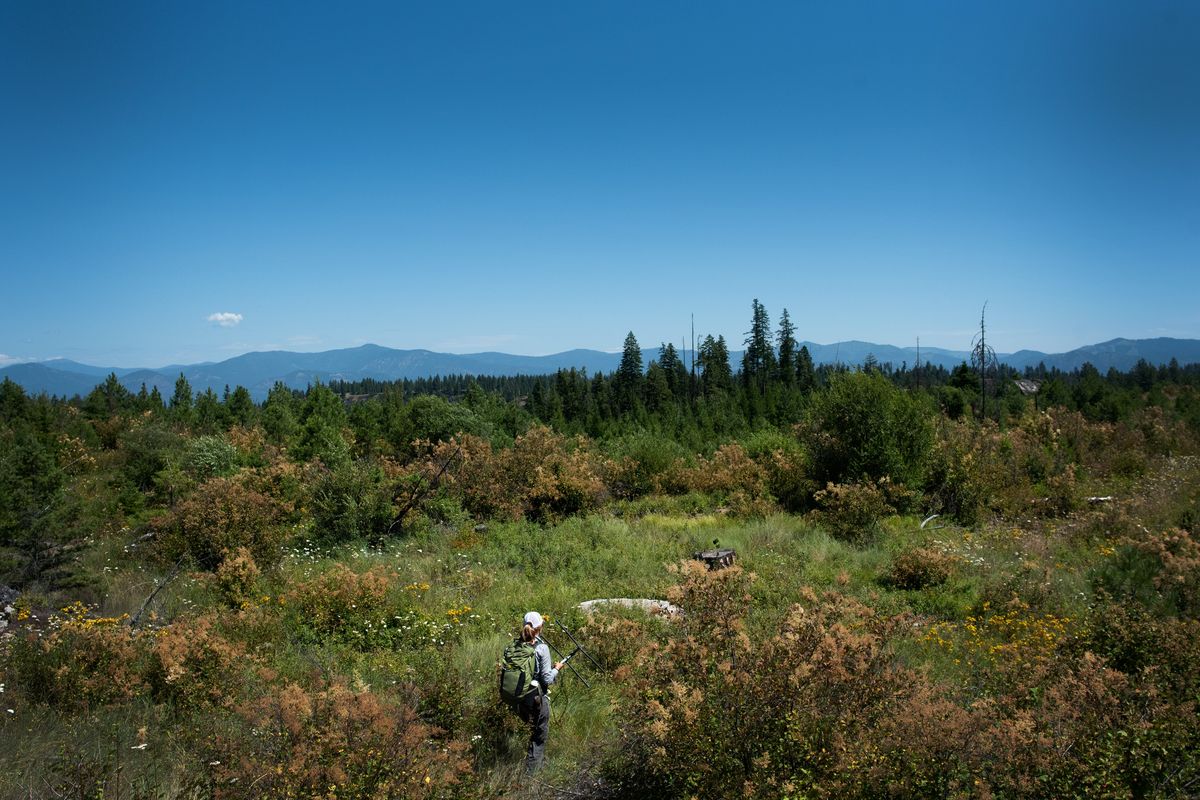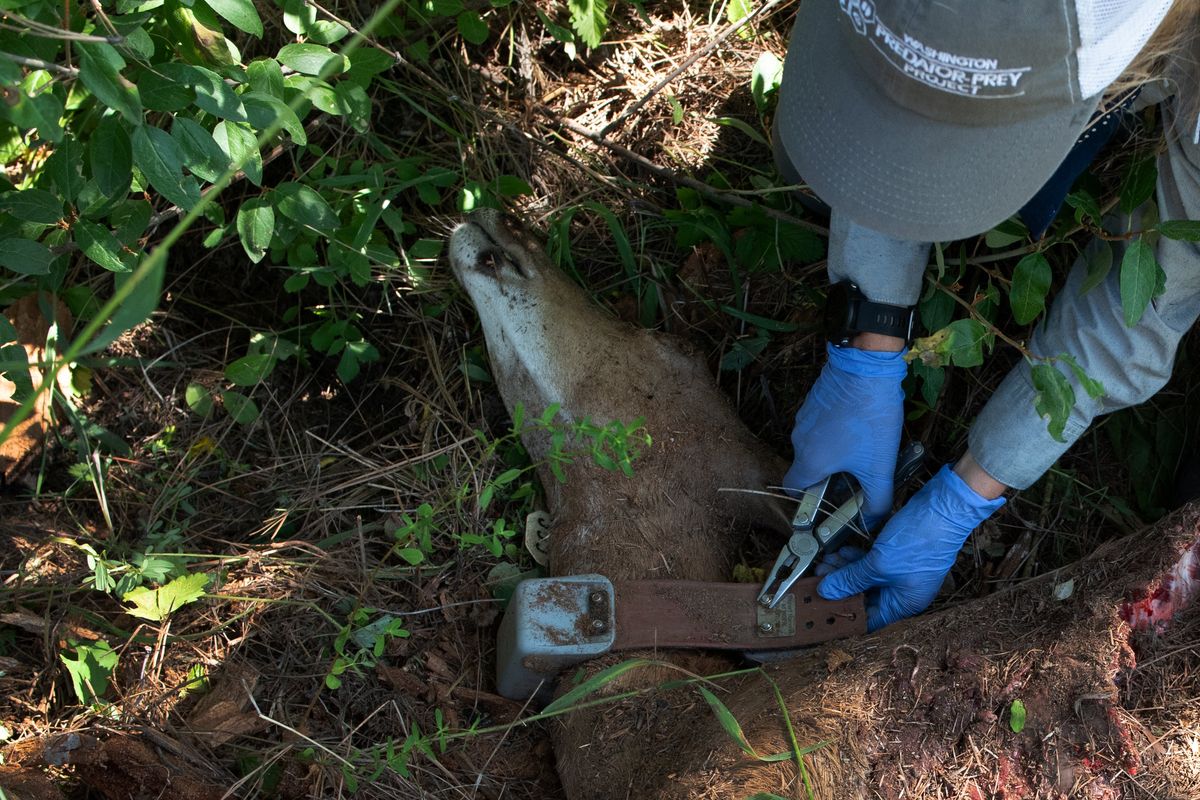Preliminary findings from Washington Predator-Prey Project indicate whitetail population is ‘neither increasing nor decreasing’
University of Washington Ph.D. student Taylor Ganz tracks a radio-collared deer on July 21, 2020, near Colville, Wash., as part of the Washington State Predator-Prey Project. (Eli Francovich/The Spokesman-Review)Buy a print of this photo
It was a hot and cloudless day when Taylor Ganz found the dead deer, its fly-ridden corpse already pungent in the August heat. Neither fact discouraged Ganz, a Ph.D. student at the University of Washington who was there, much like a detective in a homicide case, to figure out the how, the when, the why, and most importantly, the who of this death.
“I’m always hesitant to even state my first impression, because I don’t want to ultimately bias the decisions,” she said in 2020 as she examined every inch of the forest around the dead cervid. The corpse was neatly stored and covered in needles – classic cougar behavior – but Ganz is a scientist, and so she refused to jump to conclusions.
“Right now, we’re looking at the big picture,” she said. “The first thing I noticed was that it was well cached. That’s typical of felids.”
She investigated outward from the doe’s corpse, looking for drag marks, prints, or fur. She stopped and picked up some tufts of grayish fur, then took a strand and squeezed the ends together, watching the fine hair arc, bending but not folding, a telltale sign that this is predator hair. Ungulates have hollow hairs that keep them warm. When folded, they bend into sharp right angles. She measured bite marks and deconstructed the deer, skinning it, noting broken bones and cataloging the contents of its four-chambered stomach. She measured the deer’s fat reserves and bone marrow, all to understand how healthy the animal was before its death. It’s a smelly and gory process and after a nearly two-hour investigation Ganz determined the deer had been killed by a cougar.
The deceased doe was just one of the 100 or so deer and elk that Ganz was monitoring in Eastern Washington using GPS collars as part of a multiyear study looking at the tangled web of connection between predators, prey, and, increasingly, humans. The study started in 2016 when the University of Washington partnered with the Washington state Department of Fish and Wildlife. Field work for the Washington Predator-Prey Project wrapped up two years ago and now studies built off that data are inching toward publication. In November, some of those findings will be presented at the Wildlife Society’s 29th annual conference in Spokane.
Researchers are examining numerous questions. For example: How do wolves impact cougars? Or smaller predators like coyotes? Or how do mule deer respond to large fires and predators? But perhaps the question that holds the widest interest, at least for many in northeast Washington, is what’s happening with the whitetail deer population in northeast Washington?
“The whitetail deer population as it stands is stable,” Ganz said during an interview in May. “It’s neither increasing nor decreasing.”
Although that study has yet to go through the peer review process, Ganz said the central finding – that the population is stable – isn’t likely to change. That field research ran from 2017 to 2021. That may seem shocking to hunters and residents in northeast Washington who have observed declines in whitetail populations since wolves naturally returned to Washington in 2008. Ganz is aware, and receptive to these views, but believes that in all likelihood they’re misdiagnosing the cause.
“Deer numbers may have gone down, but there are a lot of factors at play,” she said.
Potential factors include deer changing their behavior in response to the return of an apex predator, thus making it harder for humans to spot them. Additionally, Ganz believes many are using deer populations from 30 or 40 years ago as a point of comparison, back when there was “a lot of timber harvest.”
“So that was probably a deer boom,” she said. “There was a lot of forage and nothing limiting them so that would have been an unsustainable level.”
And while predators can impact whitetail populations the larger constraint could be habitat. If predator numbers decreased, there might be a slight uptick in deer numbers, she said, but limited forage and habitat would curtail any growth. All of which led her to write in the abstract for her November talk that “if managers aim to increase the deer population, they should focus on increasing summer forage availability.”
Ganz plans to defend her dissertation this December after which her finalized research will be available to the public.
Melia DeVivo, an ungulate research scientists at WDFW has seen Ganz’s research and, like Ganz, doesn’t expect the central finding to change. However, she does caution against jumping to conclusions and points out that the findings from Ganz’s study don’t necessarily include the full context, something WDFW plans to provide, she said. An example of that context? Ganz’s field research ended before the EHD and bluetongue outbreaks last summer, DeVivo said. The final publication will include detailed information about what went into the modeling process.
As for the rest of the Predator-Prey research? Those findings will be collected and put into one report and published, possibly by the end of the year. That research, when all published, will give scientists, citizens and managers invaluable insight into predator-prey dynamics in human impacted ecosystems. Much of what is known about predator-prey interactions comes from research done in protected areas, like Yellowstone National Park, where human influence is light, Ganz said.
“Those dynamic’s may change in human dominated systems,” she said.



